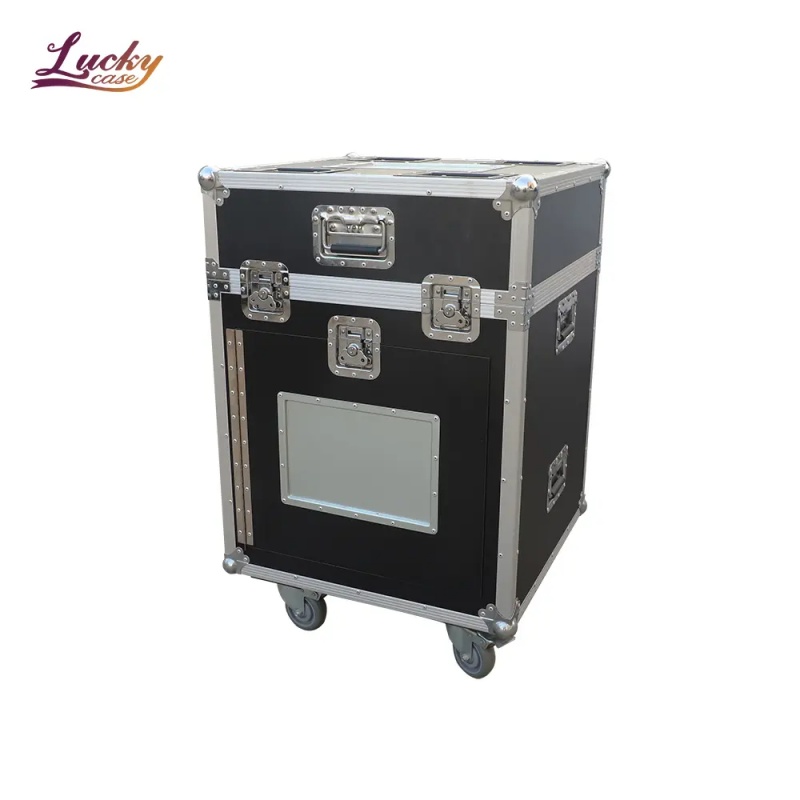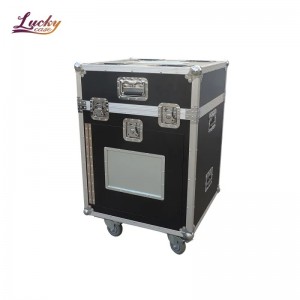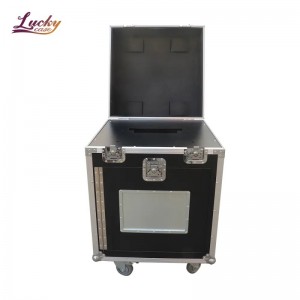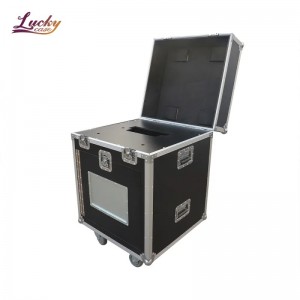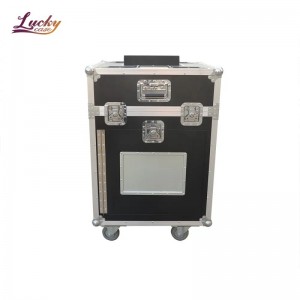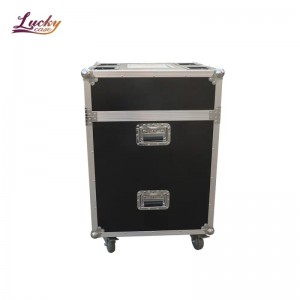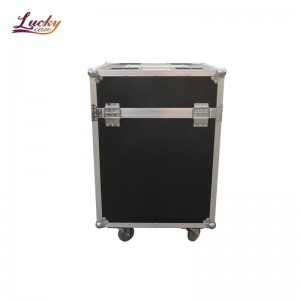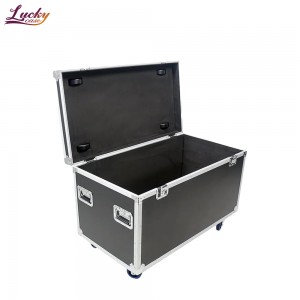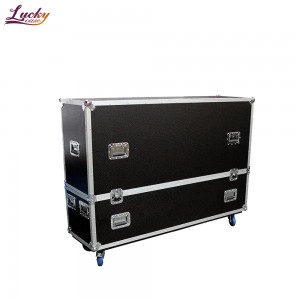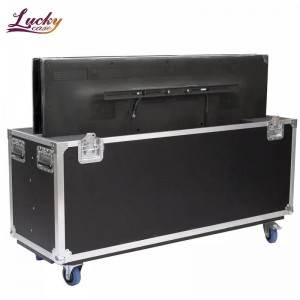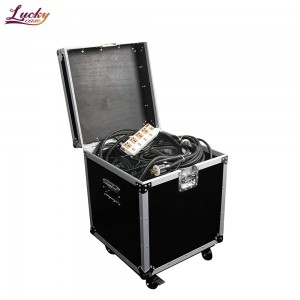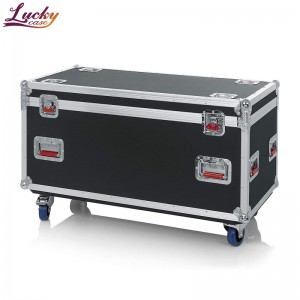
Custom Case
High-Quality Aluminum Flight Cases with Superior Shock Absorption
♠ Product Description
Superior Shock Absorption
These aluminum flight cases are engineered with advanced shock-absorbing materials that protect delicate equipment during transport. Whether traveling by air, road, or sea, the cases minimize vibration and impact damage, ensuring your items remain safe and intact. They are especially ideal for sensitive electronics, instruments, or professional gear requiring extra care.
Durable Aluminum Construction
Crafted from premium-grade aluminum, these flight cases offer a perfect balance of strength and lightweight design. The rigid exterior resists scratches, dents, and corrosion, providing long-lasting durability even under frequent use. With reinforced corners and strong hinges, the cases can withstand demanding conditions while still remaining easy to carry and handle.
Customizable and Versatile Design
Every professional has unique needs, and these aluminum flight cases are fully customizable. Options include tailored foam inserts, adjustable compartments, and various size choices to fit specific equipment. This flexibility makes them ideal for musicians, photographers, technicians, and travelers who require secure, organized, and stylish storage solutions for transporting valuable items.
♠ Product Attributes
| Product name: | Flight Case |
| Dimension: | Custom |
| Color: | Black / Silver / Customized |
| Materials : | Aluminum + Fireproof Plywood + Hardware + EVA |
| Logo : | Available for silk-screen logo / emboss logo / laser logo |
| MOQ: | 10pcs |
| Sample time : | 7-15 days |
| Production time : | 4 weeks after confirmed the order |
♠ Product Details

Sturdy Aluminum Frame
The aluminum frame connects and supports all panels of the flight case. It provides rigidity against torsion and pressure, keeping the case square and stable under heavy loads. Its anodized finish resists corrosion and scratches, while the interlocking design between the lid and body improves sealing, keeping dust and moisture out.

Secure Butterfly Lock
A butterfly lock uses a recessed, multi-point clamping mechanism shaped like butterfly wings when opened. This design allows the case to be tightly sealed without protruding parts that can snag or break off during transport. It ensures the lid stays securely fastened, even under vibration or impact, and many locks are padlock-ready for extra security.

Reinforced Corner Protector
Corner protectors are heavy-duty steel or alloy fittings placed on the edges where most impact occurs. They disperse force from drops or bumps across a wider area, preventing cracks in the panels or frame. In addition to shock resistance, they allow the case to be stacked safely, as the protectors prevent direct panel-to-panel contact.

Ergonomic Handle
The handle is designed to bear the full weight of the loaded flight case while ensuring comfort and control. Made with steel reinforcements and padded grips, it distributes weight evenly to prevent hand fatigue. Some models include retractable or spring-loaded handles to reduce bulk and make stacking easier when not in use.
♠ Product Video
See the Difference in Action!
Watch how this high-quality aluminum flight case delivers unbeatable protection with superior shock absorption, secure butterfly locks, and reinforced corners. Designed for professionals on the move, it keeps your valuable gear safe, organized, and ready for every journey. Strong, stylish, and built to last — this case isn’t just storage, it’s total peace of mind in motion.
Hit play and discover why this is the ultimate choice for secure equipment transport!
♠ Production Process
1.Cutting Board
Cut the aluminum alloy sheet into the required size and shape. This requires the use of high-precision cutting equipment to ensure that the cut sheet is accurate in size and consistent in shape.
2.Cutting Aluminum
In this step, aluminum profiles (such as parts for connection and support) are cut into appropriate lengths and shapes. This also requires high-precision cutting equipment to ensure the accuracy of the size.
3.Punching
The cut aluminum alloy sheet is punched into various parts of the aluminum case, such as the case body, cover plate, tray, etc. through punching machinery. This step requires strict operation control to ensure that the shape and size of the parts meet the requirements.
4.Assembly
In this step, the punched parts are assembled to form the preliminary structure of the aluminum case. This may require the use of welding, bolts, nuts and other connection methods for fixing.
5.Rivet
Riveting is a common connection method in the assembly process of aluminum cases. The parts are firmly connected together by rivets to ensure the strength and stability of the aluminum case.
6.Cut Out Model
Additional cutting or trimming is performed on the assembled aluminum case to meet specific design or functional requirements.
7.Glue
Use adhesive to firmly bond specific parts or components together. This usually involves the reinforcement of the internal structure of the aluminum case and the filling of gaps. For example, it may be necessary to glue the lining of EVA foam or other soft materials to the inner wall of the aluminum case through adhesive to improve the sound insulation, shock absorption and protection performance of the case. This step requires precise operation to ensure that the bonded parts are firm and the appearance is neat.
8.Lining Process
After the bonding step is completed, the lining treatment stage is entered. The main task of this step is to handle and sort out the lining material that has been pasted to the inside of the aluminum case. Remove excess adhesive, smooth the surface of the lining, check for problems such as bubbles or wrinkles, and ensure that the lining fits tightly with the inside of the aluminum case. After the lining treatment is completed, the interior of the aluminum case will present a neat, beautiful and fully functional appearance.
9.QC
Quality control inspections are required at multiple stages in the production process. This includes appearance inspection, size inspection, sealing performance test, etc. The purpose of QC is to ensure that each production step meets the design requirements and quality standards.
10.Package
After the aluminum case is manufactured, it needs to be properly packaged to protect the product from damage. Packaging materials include foam, cartons, etc.
11.Shipment
The last step is to transport the aluminum case to the customer or end user. This involves arrangements in logistics, transportation, and delivery.

The production process of this flight case can refer to the above pictures.
For more details about this flight case, please contact us!





